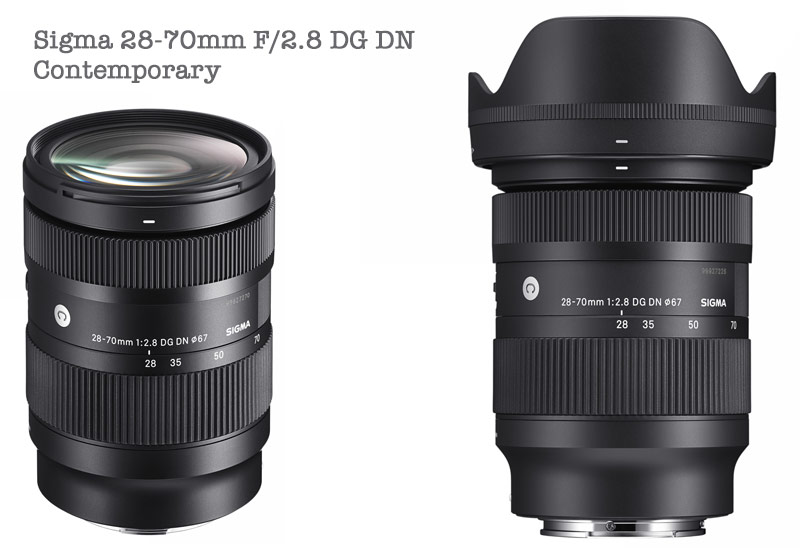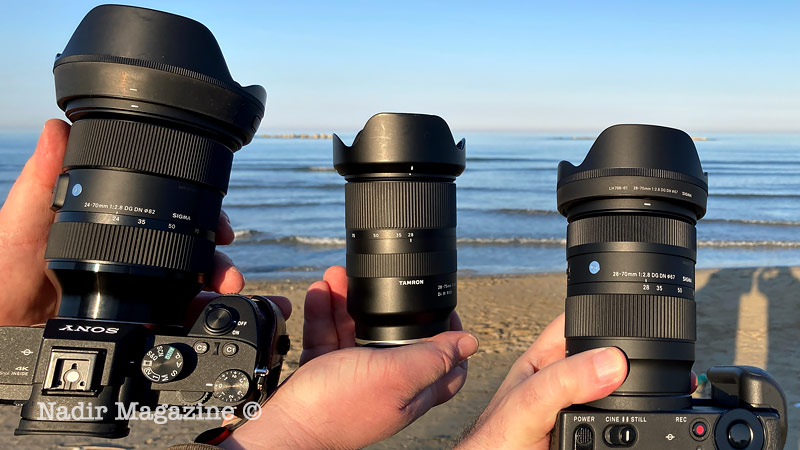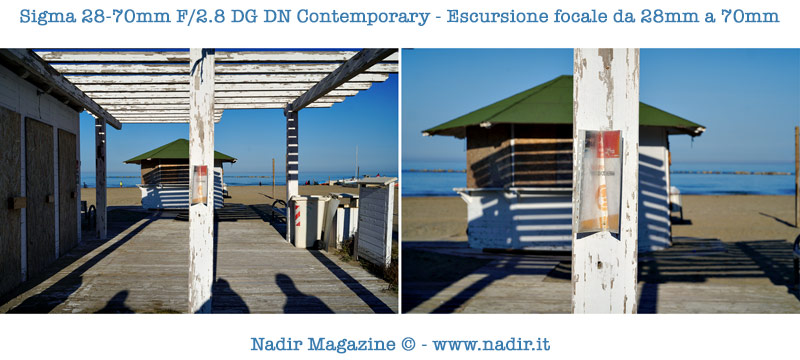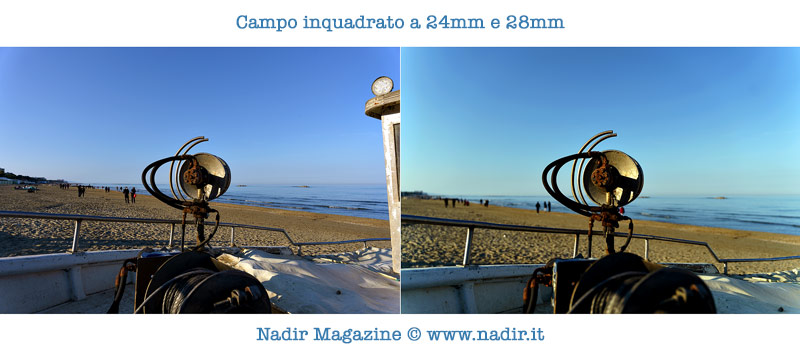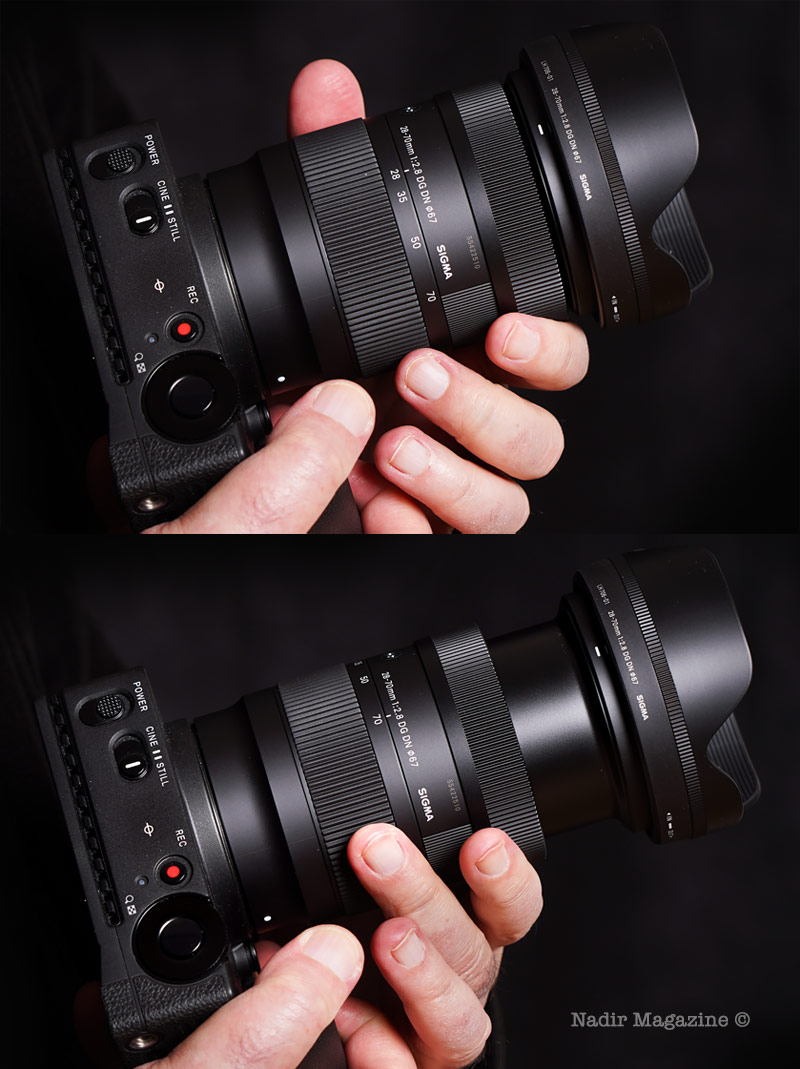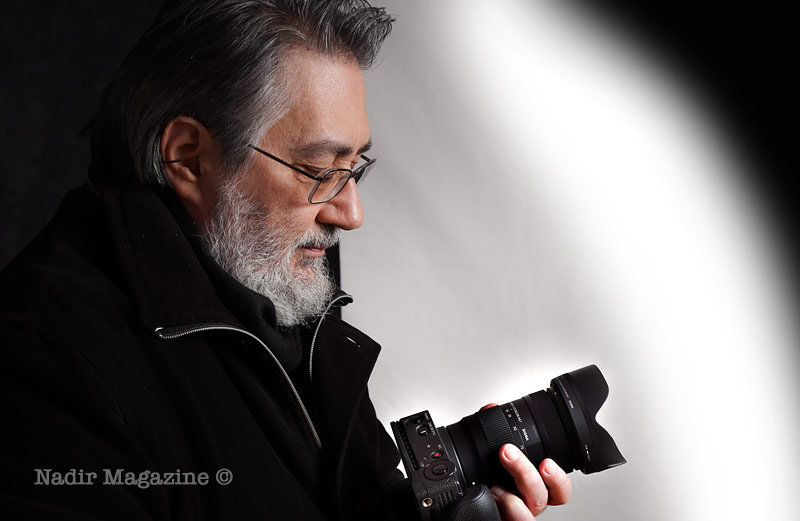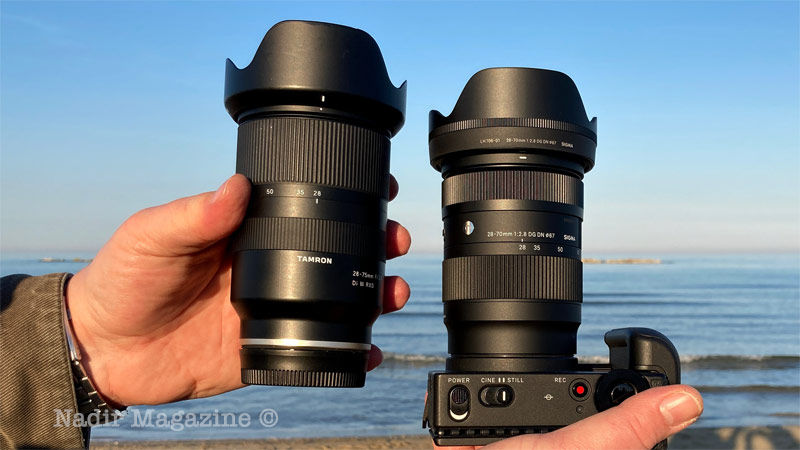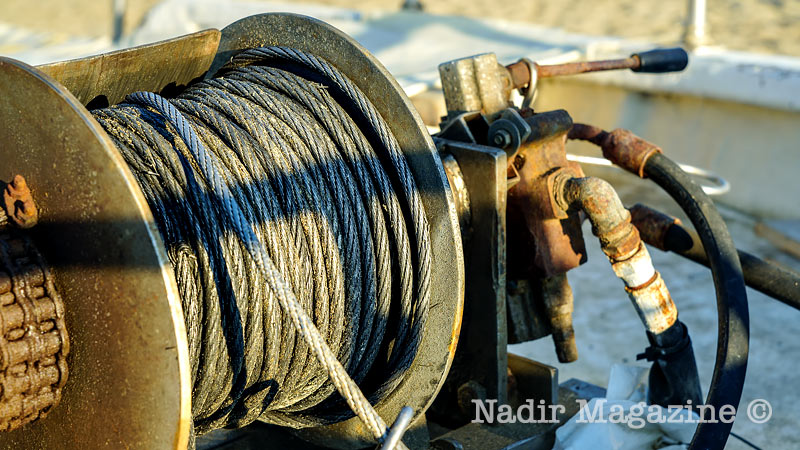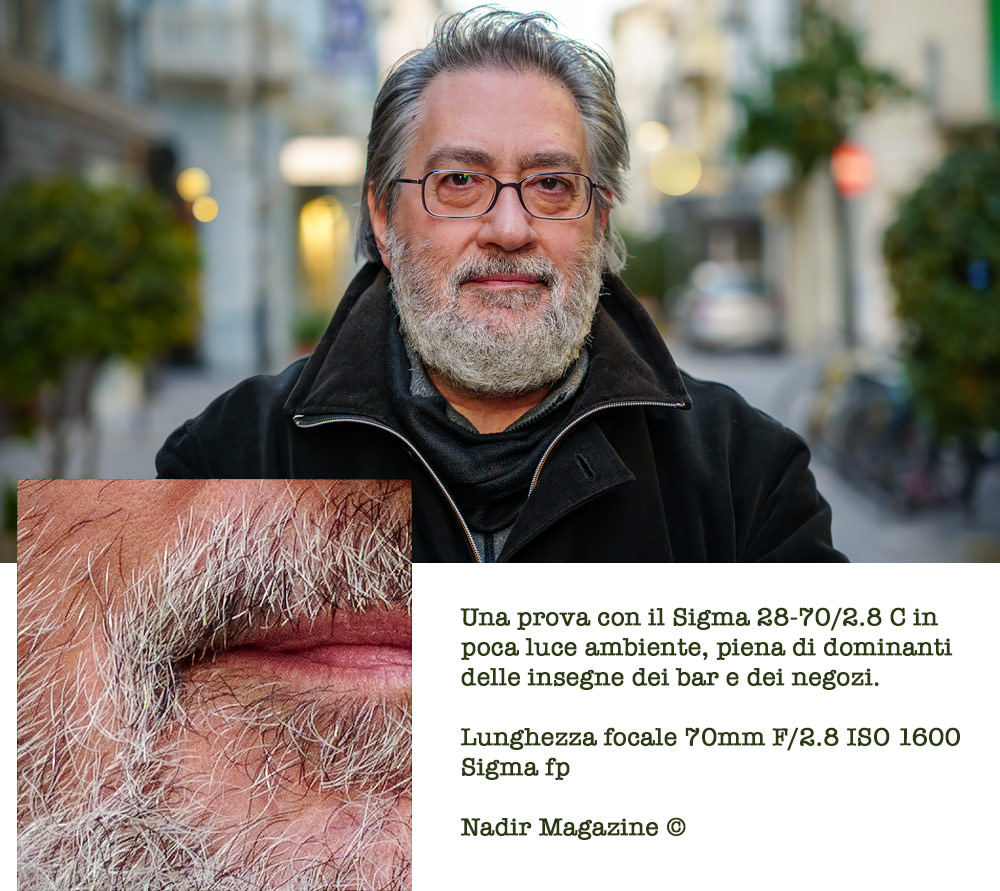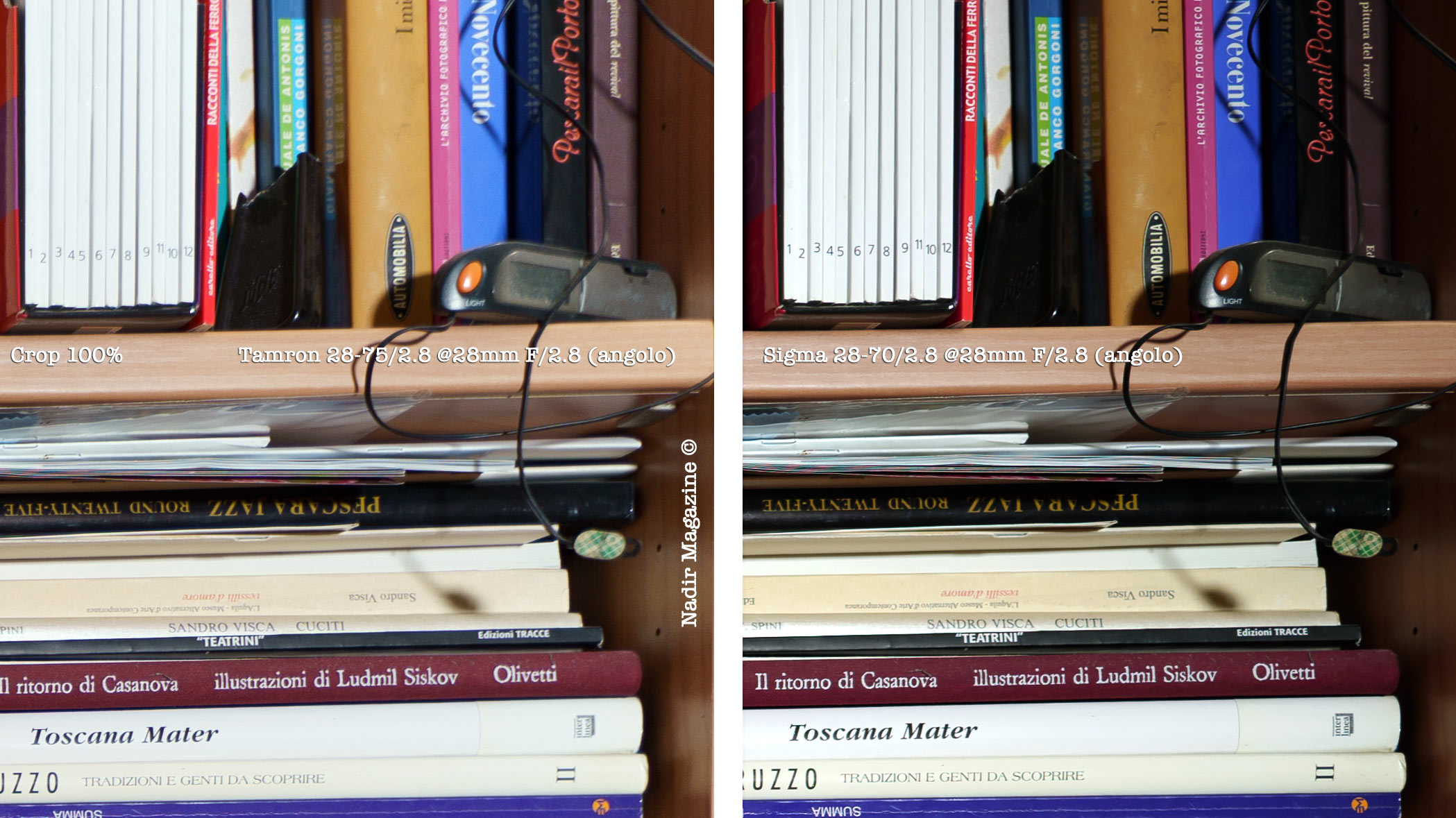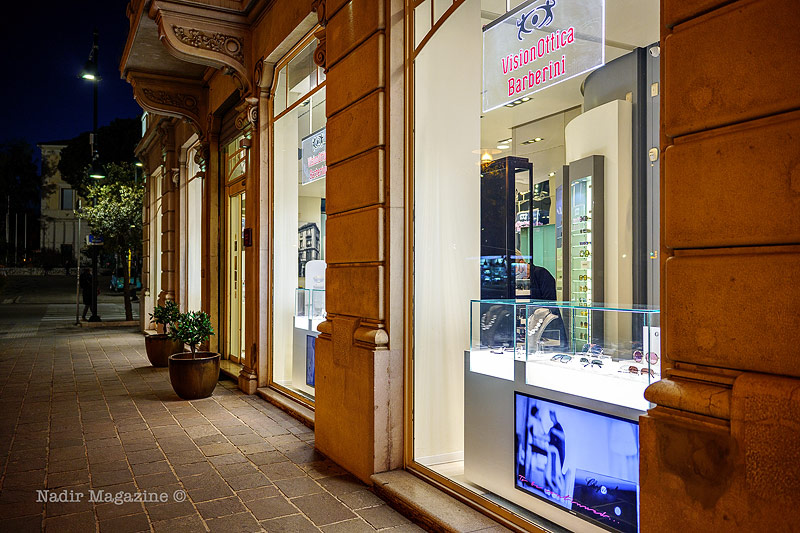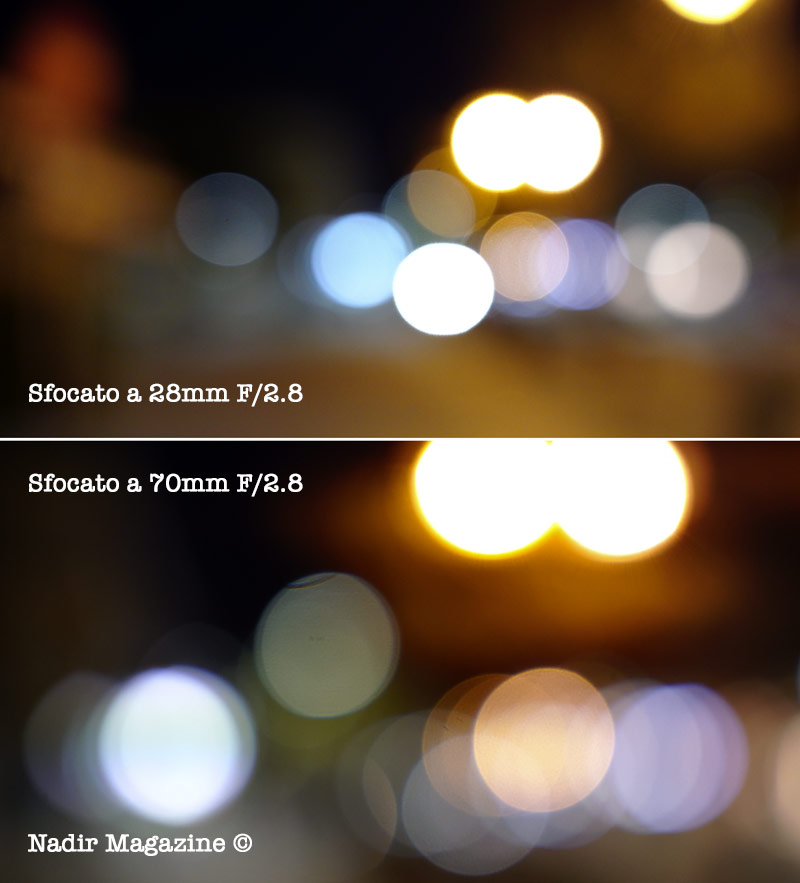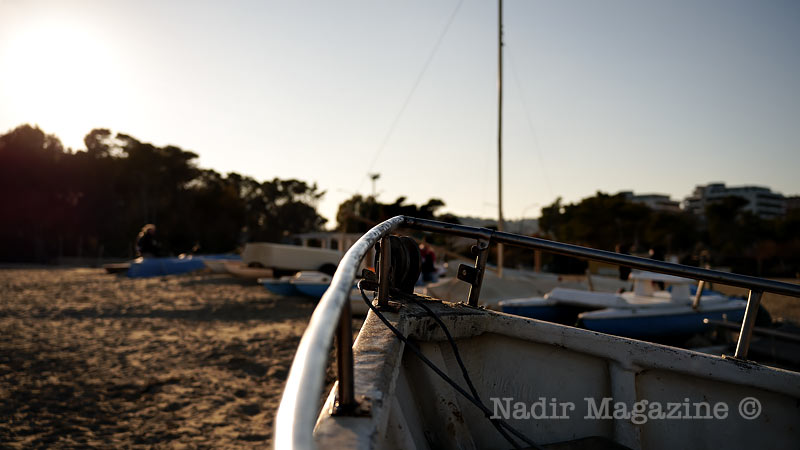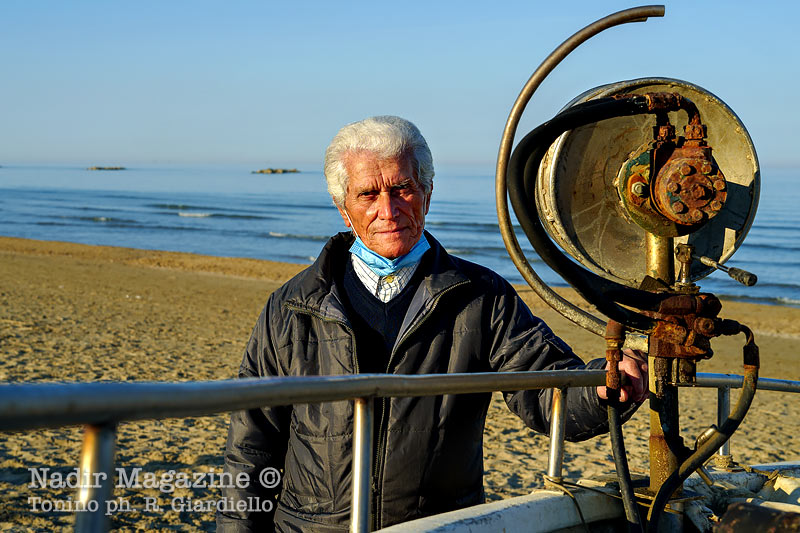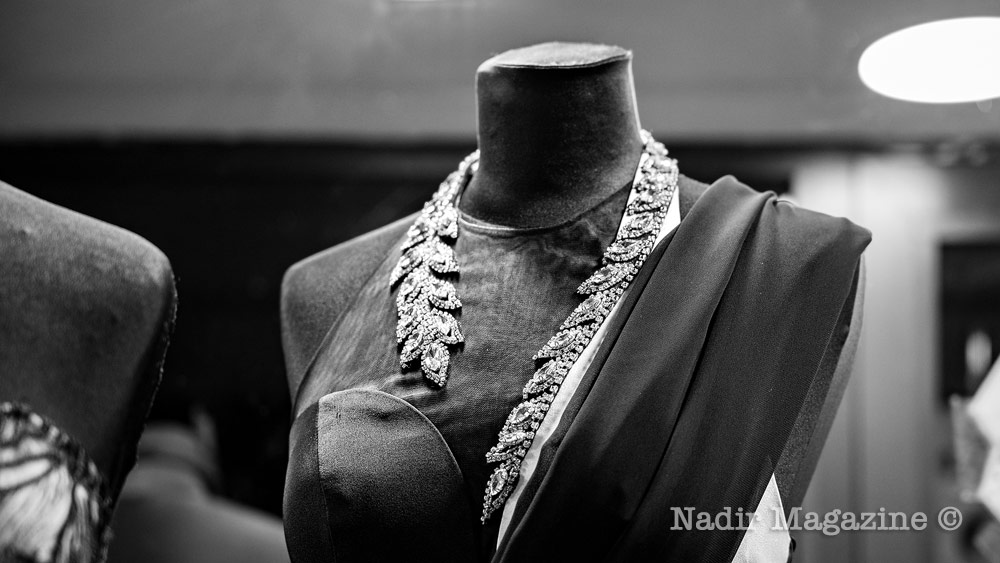Sigma continues to introduce new lenses optimized for mirrorless cameras, and this new 28-70 f/2.8 zoom can't fail to impress: it's currently the smallest, lightest and highest performing zoom of this focal range on the market. Video onYouTube (in Italian).
The first thing that many friends asked me was "What sense does it make for Sigma to present a 28-70 when they already have an excellent 24-70/2.8 Art in their catalog?". The answer is quite simple: the Sigma 24-70/2.8 Art, in addition to arriving at 24mm instead of 28, which increases its versatility, provides extraordinary performance since it belongs to the prestigious Art Series, but weighs almost twice as much as the new 28-70/2.8 Contemporary Series that costs much less and offers almost the same quality. The Sigma 24-70 Art remains the best zoom for professional needs since the same shorter focal length of 4mm greatly increases its versatility in the field and the optical and mechanical quality are at the highest levels. The Sigma 28-70/2.8 loses 4mm of wide angle, but also loses 400 grams, many cm and many Euros of the price with an optical performance only slightly lower.
After all, the sense of this operation had already been found by Tamron, which had put side by side the excellent 24-70/2.8 SP with the smaller and cheaper 28-75/2.8, which proved in all tests to be very good.
So, as for Tamron, no duplication in the family, but two zooms intended for different audiences and uses: on the one hand, maximum performance and versatility thanks to the 24mm focal length with relatively high size, weight and price, on the other hand, compactness, portability and a more affordable price without sacrificing performance. These are not super cheap lenses, but the quality entirely "Made in Japan" has its price.
Four millimeters can be very important for a wide-angle.
Even the Contemporary's finish is not the same as the Art's (if you want to cut weight in half, you have to start somewhere), and while the 24-70 Art is totally waterproofed, the 28-70 has only the front lens and rear frame protected. 12 lenses vs. 15, 4 specialty lenses vs. 8, but 2 aspherical lenses for both. Crucially, even the small 28-70/2.8 benefits from Sigma's recent "Nano Porous Coating" anti-glare treatment that has proven to work great in the field. The petal hood is supplied with the lens.
The material used by Sigma is the famous TSC already seen on many other lenses of the manufacturer: it is a polycarbonate alloy whose feeling is almost that of metal and - according to Sigma - is more resistant and less sensitive to thermal variations. The rotating inner cylinder is made of aluminum. This solution ensures robustness and consistent optical performance regardless of temperature.
The maximum aperture of F/2.8 is constant at all focal lengths and, in addition to being a great convenience in the field, also allows professional use in the studio with flashes.
Focusing in manual mode is "by wire", that is to say that the lenses are not really moved by your hand, but it drives a motor that moves the lenses respecting the speed of your action. A focus system "by wire" allows to reduce the size of the lenses and to lower their costs: less complex mechanical systems, less problems of tolerances, less production waste. The feeling, even though it is a motor that focuses and not your hand, is very natural.
Size comparison
When I tried the Sigma 24-70/2.8 Art DN series for mirrorless cameras, I was amazed at the compact size and light weight compared to the old Sifma 24-70/2.8 Art designed for SLR cameras. Going down from over 1 kilogram to 830 grams with a much "thinner" look was no small feat, yet the 28-70/2.8 DG DN C performs a miracle: it goes from 835 grams to 470 (almost half) and the dimensions are definitely more compact, clear proof is the diameter of the filters that goes down from 82mm to 67, a diameter much more "human" in size and price of filters.
As it should be, however, the Sigma 28-70/2.8 DG DN C should be compared with its only opponent, the small and good Tamron 28-75 F/2.8 Di III RXD that has been much appreciated by users precisely because of its weight, size and optical performance compared to its larger and more expensive brother 24-70 of the SP series. Both zooms are not equipped with internal stabilization, but Sony mirrorless cameras already have it on the sensor and the Sigma fp has it electronically (very efficient also in video mode, see Sigma fp test).
Sigma 28-70/2.8 DG DN C Vs Tamron 28-75 F/2.8 Di III RXD
The Sigma 28-70/2.8 DG DN C manages to be smaller and lighter than the Tamron 28-75 F/2.8 Di III RXD (470g vs 550, 72.2x101.5mm vs 73mmx117.8mm), but what about optical quality? The Tamron does very well in the field, but the new Sigma promises very similar quality to its Art series sibling - a comparison that is not easy. (Here Tamron 28-75/2.8 SP for reflex cameras).
On the field
The Sigma 28-70/2.8 DG DN Contemporary is a pleasure to use with a small mirrorless body like the Sony A7 III or Sigma fp. Despite the compact size it grips very well and the feeling is of pleasant solidity. Forget the all-metal "Series I" feel, but it's similar to Sigma's Art and Contemporary lenses. Internal focusing is quick and precise, with no hesitation on either the Sony or Sigma fp body. In low light or more difficult subjects, I noticed a greater ease of the Sigma finding the correct focus point than the Tamron 28-75/2.8. The Sigma 28-70's AF in AF-C supports both human and animal eye and body recognition functions.
Sharpness
In the real world, it's easy to notice no difference between photos taken at different focal lengths and at various apertures with the Sigma 28-70/2.8 DG DN Contemporary. I had already noticed this tendency in the recently tested "Series I" optics (Sigma 35/2, Sigma 65/2 and Sigma 24/3.5) and had to photograph the usual library to find them. Incredible work on the part of the Sigma designers. Sharpness is always very high both in the center and at the edges even at 28mm full aperture.
The Tamron also boasts a very homogeneous performance even if the collapse of sharpness at the edges, photographing the usual library, you can see without looking for the hair in the egg and is more pronounced the difference between the worst focal length (28mm) and the best (50mm). Oddly enough, the Tamron's performance is identical at all focal lengths at F/2.8 and F/11, showing a noticeable spike in quality only at 50mm between F/4 and F/8. Simply put, the Tamron is optimized for the 50mm focal length and sharpness decreases, at the extreme focal lengths. The Sigma, on the other hand, favors extreme focal lengths (excellent 28 and 35mm!), which makes it more suitable for those who use mostly 28 and 70mm.

Sopra: foto intera della libreria inquadrata a 28mm. Sotto: crop al 100% dell'angolo in alto a destra.
Performances of Sigma 28-70/2.8 are very similar to Sigma 24-70/2.8 Art.
Distortion
Visible, at barrel, that of the Tamron at 28mm (about -2), it becomes bearing already at 50mm (about +2). The neutral point is around 40mm. Obviously, by turning on in-camera distortion correction or using a photo editing program, the distortion problem no longer exists.
The distortion of the Sigma at 28mm is a little better than Tamron but, anyway, as I always say, it is not a real problem anymore.
Bokeh
Both zooms have a 9-blade circular diaphragm, but this is not enough to guarantee excellent blur. Today there is no lens that does not have a circular diaphragm - it has become almost a fashion - while once the diaphragms were hexagonal and the blur, especially in German optics, was always excellent (after all, at full aperture, the shape of the diaphragm no longer matters). This shows that the optical design is as important as and more than the shape of the diaphragm. Sigma explained to us, just with the presentation of the new "Series I", the importance of optical design and, in fact, the Sigma 65/2 DG DN C, has an exceptional blur that looks like that of an old-school 85/1.4. The bokeh of the Sigma 28-70 is always soft and creamy without double lines, more pleasant than that of the Tamron, which I would not hesitate to define "nervous", but - in a less obvious way - also than that of the Sigma 24-70/2.8 Art.
Magnification ratio
The Sigma 28-70/2.8 DG DN Contemporary at 28mm has a minimum focusing distance of 19cm from the sensor plane, which means that the subject is only 6.9cm from the front lens. The shooting situation in my opinion is not optimal even if common to most zooms (among other things, it is almost identical to the Tamron that comes to 5.7cm from the front lens). The magnification ratio of 1:3.3 can be useful in many occasions because the quality is good since it is a zoom and not a macro lens. Personally, for close-up photos, I prefer to use the 70mm focal length at the shortest focusing distance, which is 38cm: the magnification ratio is lower, but it allows me not to get on top of the subject and, in some cases, to shade it with the hood.
Conclusions
In the end, thanks to the constant brightness throughout the focal range and the excellent overall performance, the Sigma 28-70/2.8 DG DN Contemporary is the lens that you would almost never change if not for the need of wider-angle focal lengths. Sigma, with this small and lightweight zoom, has raised the bar of quality coming, with a lens of the Contemporary series, very close to the performance of the Art series (which is still the best a photographer can want) whose zoom 24-70 weighs twice as much and costs much more; at the same time visibly exceeds in most of the photos of the test, the performance of the only similar lens - in size and price - on the market, the Tamron 28-75/2.8 Di III RXD, dethroned without doubt by the Sigma 28-70. The mechanical construction and finish of this small Sigma zoom are very good, as well as the anti-reflection treatment that allows you to never have to give up a photograph because of powerful light sources in the frame.
As for other recent lenses made by Sigma (see the "I Series"), the point in favor, beyond any instrumental detection, is the "beauty of the images", the "cleanliness of the images" and a remarkable "presence effect" due to a beautiful blur, something very difficult to quantify and explain, but if you have an authorized Sigma dealer in your area, I recommend you to go and try it for yourself. This tiny 28-70 Sigma Contemporary series is the closest lens, in terms of performance, to the beautiful Sigma 24-70 Art series that remains the perfect choice for professionals and for the most demanding amateur photographers.
Rino Giardiello © 02/2021
All Rights Reserved
Articoli correlati
• La Videorecensione del Sigma 28-70/2.8 DG DN Contemporary su YouTube
• This article in Italian
• La sezione di Nadir interamente dedicata a Sigma (fotocamere, obiettivi, accessori, software, trucchi, etc...)
• Flash compatto Sigma EF-140S
TTL
• Test Sigma fp, compatta e modulare, la prima fotocamera mirrorless Bayer di Sigma
• Test Sigma dp1 Quattro
• Test Sigma 105/2.8 Macro DG DN Art
• Videorecensione prime impressioni Sigma 35/2 e 65/2 Contemporary Serie I
• Videorecensione test approfondito Sigma 35/2 DG DN Contemporary Serie I
• Videorecensione Sigma 105/2.8 Macro DG DN Art
• Videorecensione "Sigma sd Quattro, la seconda giovinezza"
- prima parte
• Videorecensione "Sigma sd Quattro, la seconda giovinezza" - seconda e ultima parte
